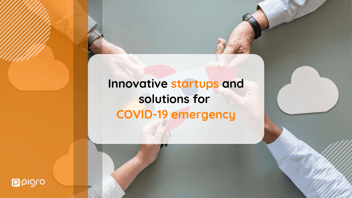New technologies play a key role in developing the open innovation business model, thanks to the characteristics of speed, pervasiveness, and effectiveness, which allow the diffusion of knowledge in all directions and optimize knowledge management.
Open innovation definition
The concept of innovation has changed over time. The change in economic processes has led to a new meaning of "innovation", different from the traditional one we were used to: open innovation.
But what is open innovation?
According to Henry Chesbrough, economist, and writer, as well as the one who, in 2003, coined the term and the model of 'open innovation', the resources missing from their company can be found outside, using startups, universities, research centres, inventors and experts, to bring ideas, tools, and technologies to innovate.
Consequently, the company's structure and internal culture also change, becoming more externally oriented and with greater collaboration with other realities.
This concept has also evolved over time and in 2014 we have a further Henry Chesbrough open innovation definition: "a distributed innovation process based on purposively managed knowledge flows across organizational boundaries” to generate even 'spillover', the phenomenon that occurs when an economic activity produces positive effects beyond the areas for which it acts.
The open innovation approach can take place through two different approaches:
-
Inbound open innovation: search for stimuli outside the company to make innovation within it, as in the case of partnerships with other realities and collaborations with universities;
-
Outbound open innovation: externalization of internal stimuli to innovate outside the company, such as the Joint Venture and Platform Business model.
-jpg.jpg?width=642&name=open_innovation%20(1)-jpg.jpg)
Open Innovation tools
In order to implement this model of innovation, a company has different methods at its disposal, all useful for scouting new technologies, ideas and people that can bring innovation to the organization:
- Call4ideas, call4startup, contest: the tool of the competition of ideas allows the development of a challenge, that is, to launch a challenge for the resolution of a problem and address it to external subjects called to propose solutions that reach the objective. It is the most common form of cohesion between open innovation and Startups, Research Centers, and Universities.
- Hackathon: a similar process, but it involves a programming competition and is therefore intended for developers who must propose innovative digital solutions.
- Incubators and accelerators: a company can choose to create an open innovation hub, an internal laboratory, or a company department dedicated to the promotion and development of open innovation. The objective is to support young companies by providing them with tools and spaces to develop a business or, as in the case of accelerators, to invest in these nascent companies by supervising the growth process from within.
- Partnership and startup adoption: it is about creating networking opportunities, thanks to the creation of inter-company agreements, between two large companies or between companies and startups, of collaborative relationships with universities, research centres, or experts in certain sectors. This is why we talk about Co-Innovation.
- Crowdsourcing: it happens when some business activities that cannot be followed internally are externalized. For example, through online portals companies can insert their requests and connect with users/professionals that provide a solution, usually asking for payment in return.
- Prizes: companies can choose to establish prizes to identify those companies that have aroused the most interest by proposing an innovative solution and collaborating with them in the realisation of a project.
- Acquisitions: In this case, a company takes over the shares of another company, thus acquiring ideas, technologies, and skills, and may choose to integrate employees into its workforce.
- Open innovation platforms: these are virtual spaces that bring together the challenges of companies, public institutions, and organisations, and aim to connect companies and individuals specialized in different sectors; to promote innovation initiatives such as those mentioned above.
Benefits of the open innovation model
The benefits of applying an open innovation strategy are many and contribute to improving and simplifying the business innovation process:
-
reduction of R&D costs, relying on external companies such as startups, universities and research centres;
-
adoption and creation of new technologies, which lead to a greater ability to adapt the business to the environment to remain competitive in the market;
-
new business opportunities and increasing quality and variety of products and services, thanks to the synergies between the actors involved;
-
reduction of the risks, time to market, and costs related to the launch of products/services, thanks to the collaboration with external partners that will be able to supply complementary assets and divide the burdens, minimising the possibilities of failure.
Barriers to Open Innovation
The main obstacles to the Open Innovation model can be of two types: cultural or structural.
Among those of a cultural nature, there is a lack of networking capacity, not knowing how to create and share knowledge, both among the various company departments and externally, towards other companies and consumers.
Resistance to change hinders the reorganization of work necessary to achieve co-innovation and is also related to a lack of training and a culture of collaboration.
In the structural sphere, this is reflected in the lack of systems for knowledge transfer and the absence of collaborative platforms. There are usually no specially trained people or teams. Financial problems are often at the root of these shortcomings, as there is no investment in development and training.
From the point of view of employees, there is also a need for more motivation, since companies do not have incentive systems for those who work in Open Innovation.
So how can we overcome these barriers and promote the open innovation model? Read the second part: How knowledge management supports open innovation
Learn more: Information hoarders: let’s find out if there is a Knowledge Hoarding problem in your company
Do you want more information about Pigro? Contact us!



